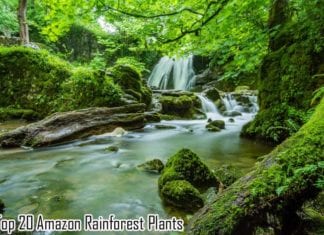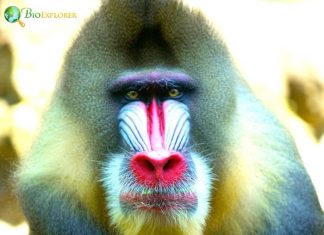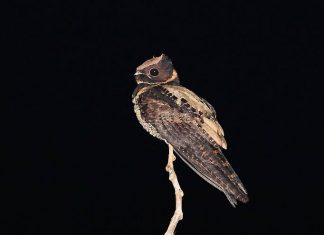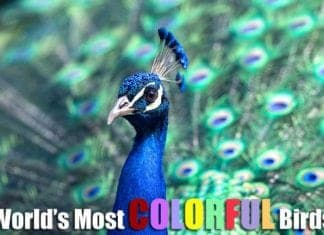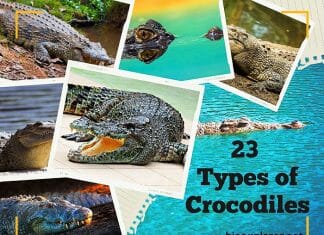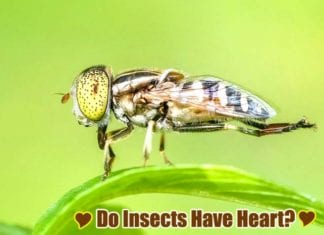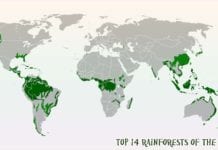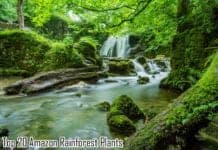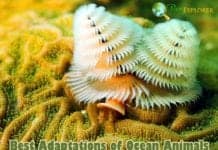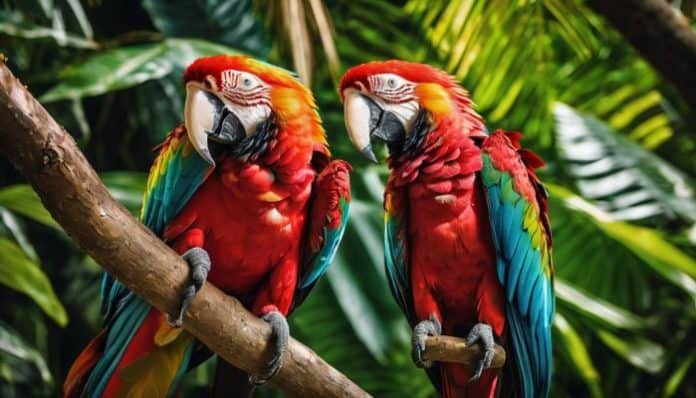
Have you ever wondered about the diverse array of wildlife living in rainforests? Believe it or not, more than half of the world’s species reside in these vibrant habitats. In this blog post, we’ll dive into the intricate ecosystem of rainforests and spotlight some incredible creatures that inhabit them. Keep reading to embark on an adventurous tour through tropical canopies teeming with life!
Table of Contents
- Overview of rainforest animal diversity
- Unique adaptations of rainforest animals
- Mammals in Rainforests
- Birds in Rainforests
- Reptiles & Amphibians in Rainforests
- Insects and Other Invertebrates
- Conclusion
- Frequently Asked Questions
- What kinds of animals live in the rainforest?
- Can large animals survive in the rainforest?
- Are there unique species of birds only found in the rainforests?
- Do all snakes from a specific type inhabit the Rainforests?
- Are marine creatures also part of Rainforest life?
- What is the definition of a rainforest?
- What is the most common rainforest animal?
- Where do people live in the rainforest?
- What do rainforest animals have in common?
- How many animals are in rainforests?
Overview of rainforest animal diversity
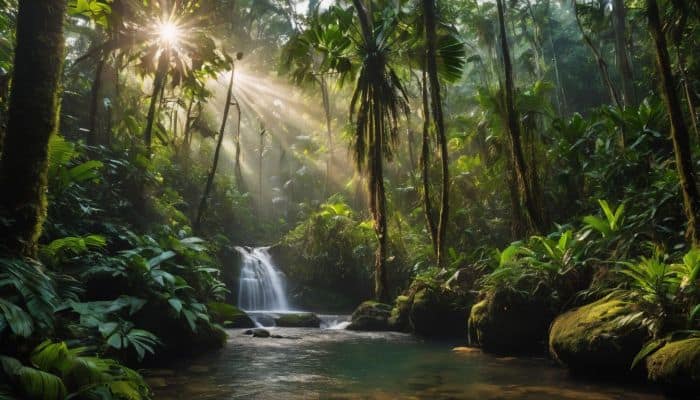
What Animals Live In Rainforests? Rainforests are full of many kinds of animals. These places have many plants and trees to eat, hide in, or live on. Some rainforest animals are the jaguar, pink river dolphin, or poison dart frog.
There are more than we can count! This great mix makes every rainforest special or “diverse“. One cool thing is that some rainforests, like Borneo and New Guinea, have even more plants and animals than others! Every rainforest has so much life buzzing around at all times during the year.
Animals here never get bored because changes happen slowly over time in these ecosystems.
![]()
Unique adaptations of rainforest animals
Rainforest animals show unique skills to live where they are. A sloth, for example, sleeps during the day and wakes up at night. This is a way of life named “nocturnal“. Some others act only in specific time frames.
Camouflage helps many species merge with trees or leaves so predators won’t see them. Climbing and swimming traits have developed, too, which let some move better in their homes high above ground or deep in rivers.
Scary poisonous skin wards off attackers among several small animals. These special changes mean rainforest animals can survive in diverse places full of food sources and threats.
Suggested Reading:
Top 18 Amazon Rainforest Plants
Mammals in Rainforests
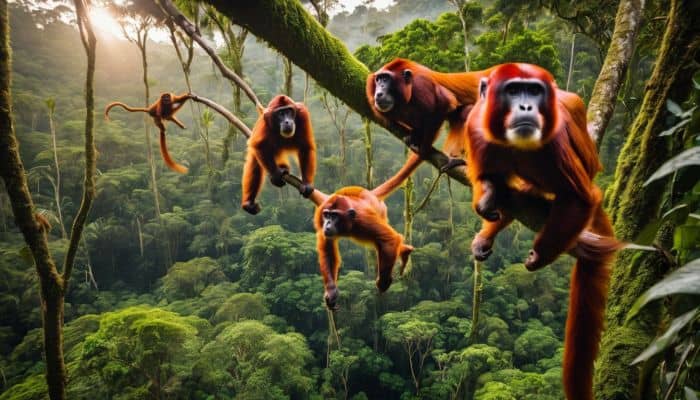
Dive into the lush, humid world of rainforests, and you’ll meet fascinating mammals like jaguars stalking their prey silently or Giant River otters sliding effortlessly in waterways.
You’d see a Red howler monkey emitting calls that resound across the canopy. You might find a Capybara relaxing near a marshland. Wouldn’t it be delightful to observe a Black-capped squirrel monkey swinging skillfully among branches or witness the slow-paced life of an adorable Sloth hanging lazily on trees? Picture yourself spotting Pink River Dolphins amidst sparkling waters while Puma prowls stealthily nearby, waiting for its chance to pounce.
With curious eyes peeking from behind dense foliage is the Bearded Emperor tamarin – assuredly one encounter you won’t forget! Please tune in for intriguing stories about these amazing creatures who call our planet’s most complex ecosystem home! By reading further, learn more about their unique adaptations to life in this intricate environment!
Suggested Reading:
Explore The Layers Of The Rainforest
Jaguar
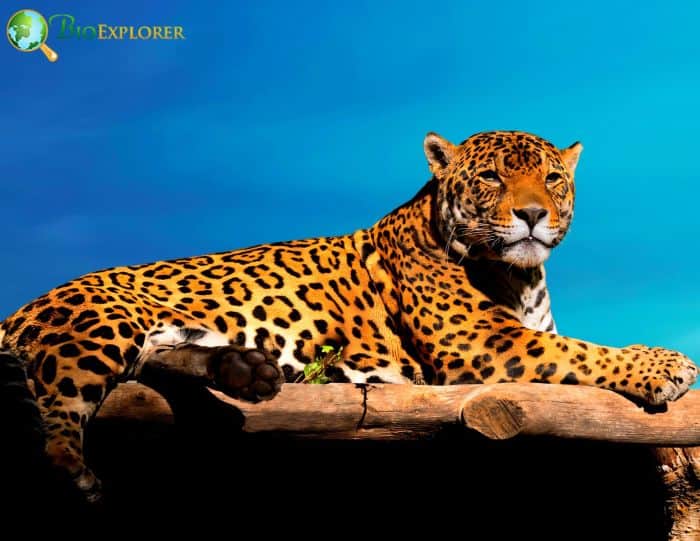
Jaguars rank as the third largest cat in the world. They love to live in rainforests, swamps, and other wet places across Central and South America. Jaguars hunt many types of animals like deer, birds, fish, or monkeys.
They can also eat things like iguanas by a river or swampy place. Jaguars can live 12 to 15 years if they stay safe from threats in their home territory. This wild cat is crucial for keeping balance in its habitat because it helps control other animal populations.
Giant River Otter
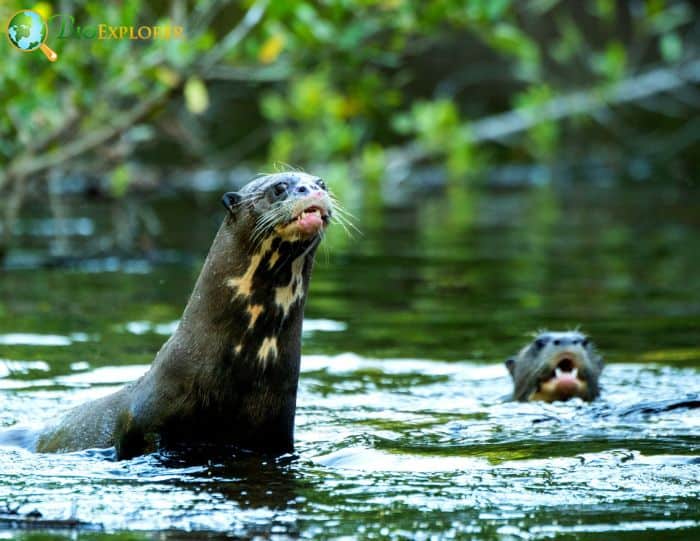
The Giant River Otter lives in the South American rainforests. They swim in rivers like the Amazon, Orinoco, and La Plata. These otters are big – the largest otters in the world! Often, these otters live together in large groups.
They rule their homes since they are an apex predator amongst other animals of freshwater habitats. The Mustelidae family is theirs; fish and small caiman comprise most of their food plate.
Red Howler Monkey
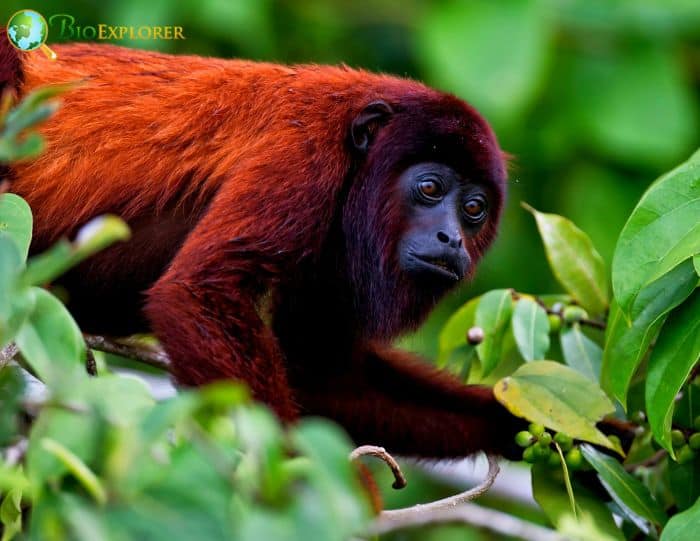
The Red Howler Monkey is a big primate. This monkey lives in Central and South American forests . It’s the biggest type of howler monkey out there. It has thick fur that can be brown or dark red.
Sometimes, its belly may even look gold or bright orange! A funny fact about these monkeys is that their tails are very long – they can be five times longer than their body! The Red Howler Monkeys are part of the Atelinae subfamily, where some heavy New World Monkeys belong too!
Suggested Reading:
Types of Rainforest Monkeys
Capybara
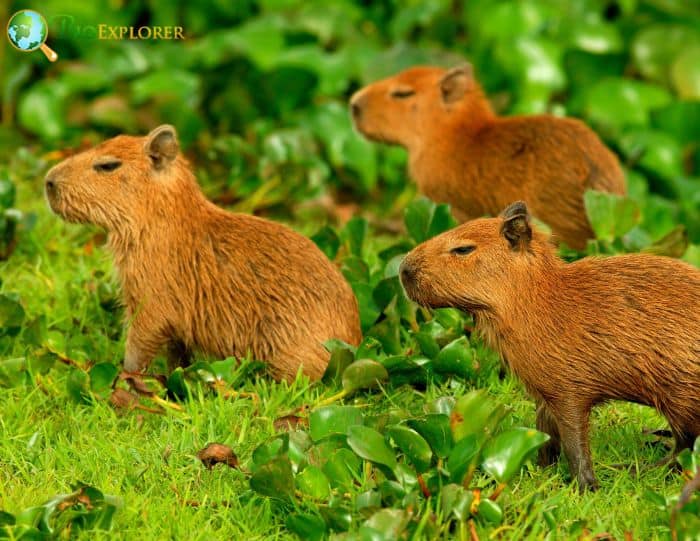
Capybaras come from many places. They live in rainforests in Panama, Venezuela, Brazil and more. You can find these big rodents near Central and South America water. Capybaras love to swim!
Being the largest rodent on Earth is not always easy. Capybaras have many foes in the forest, like jaguars and green anacondas. Yet they still grow up to 4.5 feet long! The same family as guinea pigs and chinchillas, capybaras stand out for their size.
Black-capped Squirrel Monkey
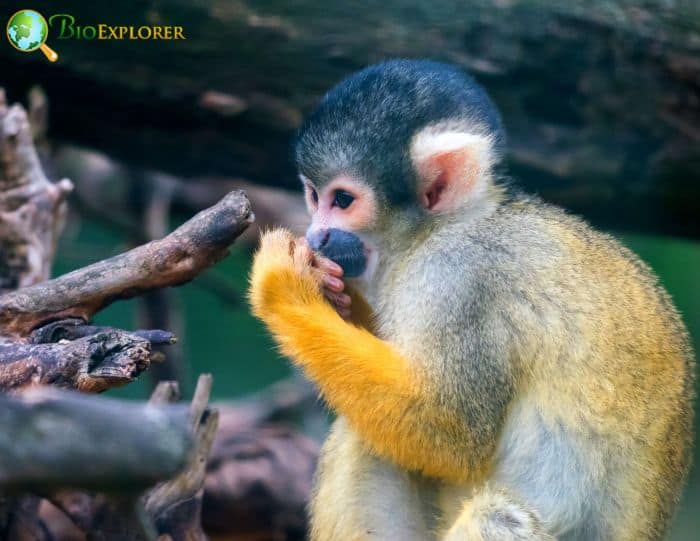
The Black-capped Squirrel Monkey is a tiny jungle dweller. This furry fellow calls the Amazon Basin home and loves life in lowland Tropical Rainforests. It’s common to spot them near running water or hanging around native plantations.
They are at ease up in trees, making them arboreal creatures. From Central to South America, they flit about tropical jungles and forests with skill and agility that speaks of their time-honored tree-dwelling ways!
Sloth
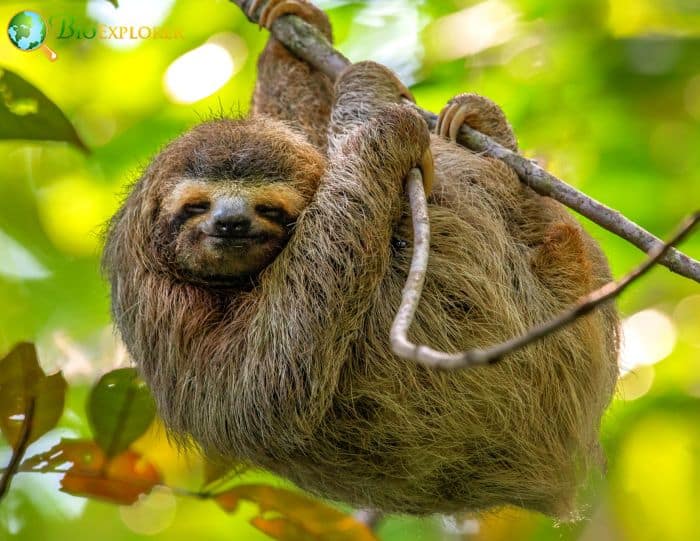
Sloths are slow-moving animals that live in rainforests. You can find them high up in Central and South America tree tops. These creatures don’t roam around much – trees are their home! Six kinds of sloths live out there.
One cool thing about sloths is that they have a helper living on their fur – algae. algae give the sloth’s fur a greenish look, which helps it to hide from predators by blending into the canopy leaves.
But danger is coming for these sleepy animals; humans cut down jungle trees to make way for farms and cities. This turns the peaceful forest homes of sloths into noisy, busy places, making it hard for them to live happily like before.
Collared Anteater
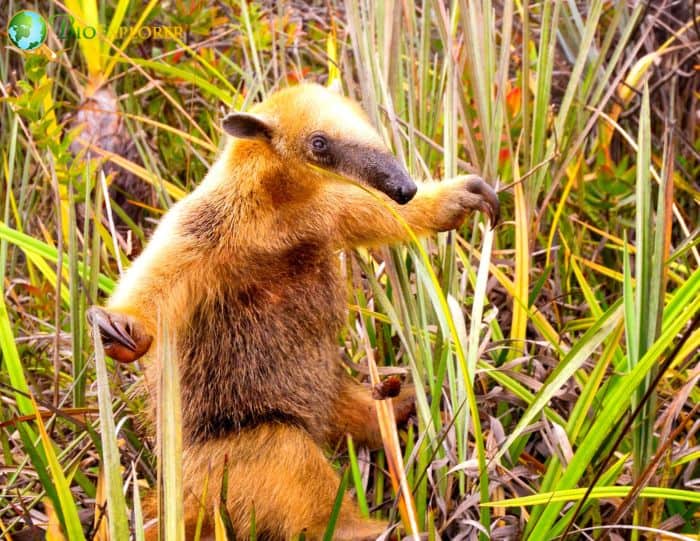
The Collared Anteater is a cool animal. It lives in rainforest trees and other places, like dry forests and grasslands. This type of anteater is also known as the southern tamandua.
Not as big as a giant anteater, it still packs quite an appetite for ants! With this special diet, they play a key role in their habitat by controlling ant populations. They are made to live high up in the trees or arboreal living if you want to sound fancy.
So next time you’re walking through a forest, look up! You might see one hanging from a branch above.
Puma
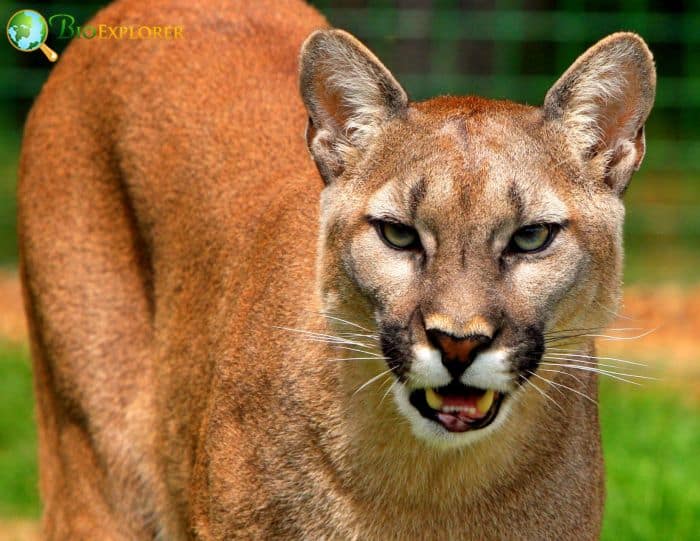
Pumas are big cats that live in many places, from rainforests to swamps. They are the fourth biggest type of cat in the world. People also call them cougars, mountain lions, and panthers.
These animals eat meat and love to hunt deer, elk, cows, and sheep. In the rainforest, they play a key part as top hunters.
Bearded Emperor Tamarin
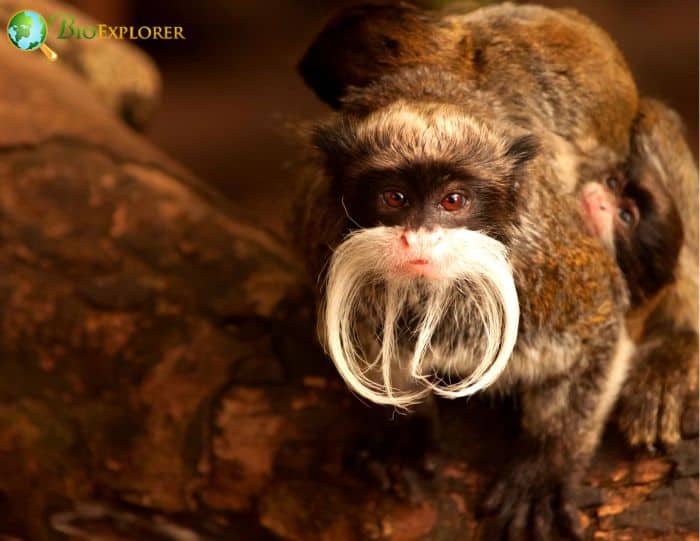
The bearded emperor Tamarin is a small monkey with fluff. It lives in the rainforests of South America. This primate has white facial hair that hangs down like a mustache and beard.
You can spot it among other wildlife in tropical forests because of its unique look. The diet of this animal includes fruit, gum, flowers, and small animals.
Pink River Dolphin
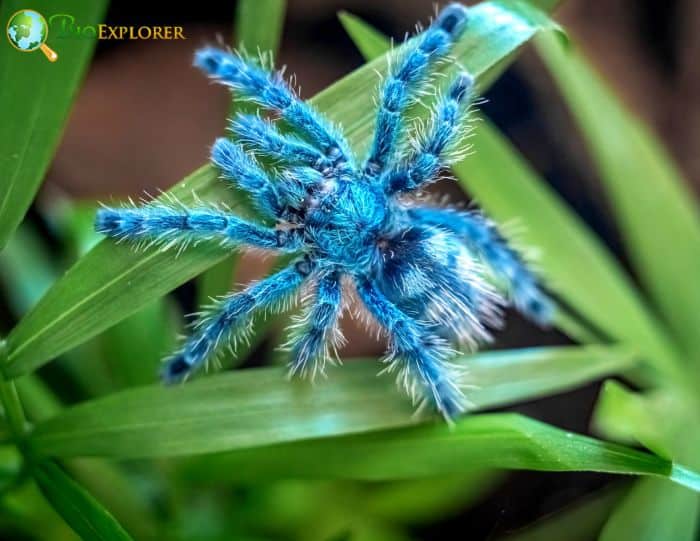
The Pink River Dolphin is called the Amazon River dolphin or boto. It lives in freshwater. You can find it in lakes, rivers, and even flooded rainforests at times of the year. This dolphin grows up to 9 feet long, beating all other river dolphins.
This aquatic mammal has a big brain, too! Its brain is 40% larger than that of other species. This makes it the wisest among all river dolphins. Yes, the Pink River Dolphin sets itself apart with its size and smartness!
Birds in Rainforests
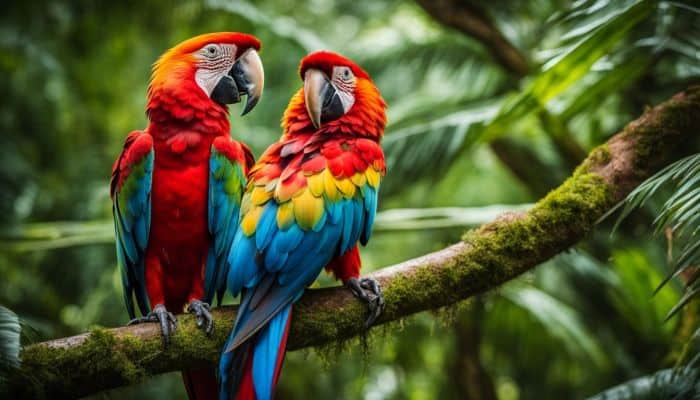
This section explores the birds that inhabit the dense canopies of rainforests, including colorful and charismatic species like Macaws and Toucans. The Harpy Eagle, one of the world’s largest raptors, resides in these woodlands.
Also highlighted is the Spangled Cotinga, displaying vibrant plumage matching their lush habitat. Meet the Royal Flycatcher with its striking crest and peculiar habits, such as the Potoo Bird with excellent camouflage to blend within tree barks.
Lastly, discover Paradise Tanager – a bird revered for its iridescent coloration symbolizing rainforest diversity.
Macaw
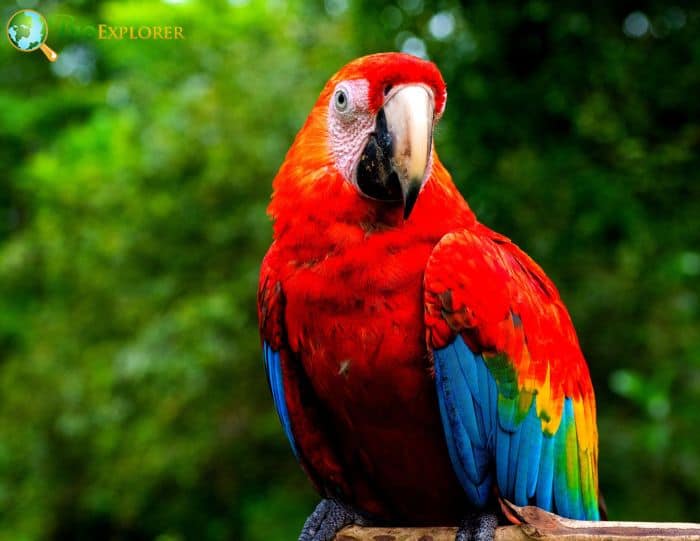
Macaws show a lot of smarts. They enjoy being with others in the rainforest. From high up, their loud calls and screams fill the air under the forest roof. These brilliant birds love to live in full forests such as those seen in Mexico or the Amazon.
Two kinds stand out: military and scarlet macaws. You will often see these types in dense parts of the woods. Sadly, most types are dying off or lost forever because people wrongly cut down too many trees and catch them for pets.
Harpy Eagle
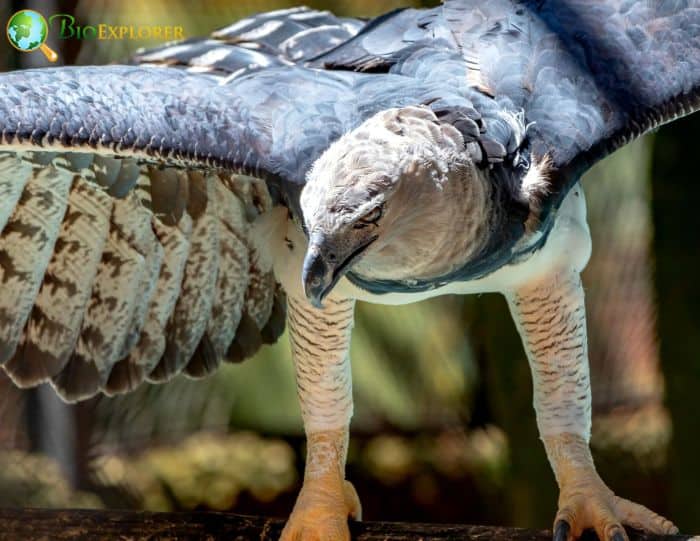
The Harpy Eagle is a bird found in Central and South American rainforests[1]. This eagle likes to live high up in the tree tops of thick, lowland forests. Known as the world’s most powerful eagle, it rules over all other creatures flying around in this forest.
It is the biggest and strongest bird among all rainforest birds that hunt for food. Amazingly, sloths form much of what the Harpy Eagle eats! Its keen eyes can spot a sloth resting on branches below, even from such great heights.
Suggested Reading:
What Do Eagles Eat?
Spangled Cotinga
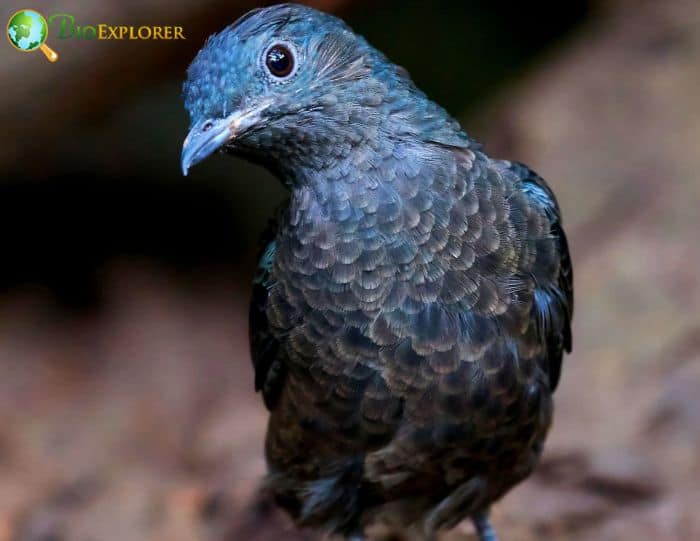
The Spangled Cotinga is a bright bird. You can see it in the Amazon Rainforest. It has colorful feathers that make it stand out. It is nearly 8.5 inches long, about as big as your hand.
This bird likes to eat fruits and bugs for meals. It also makes good friends with other birds in the rainforest because they are part of its home place called an ecosystem.
Royal Flycatcher
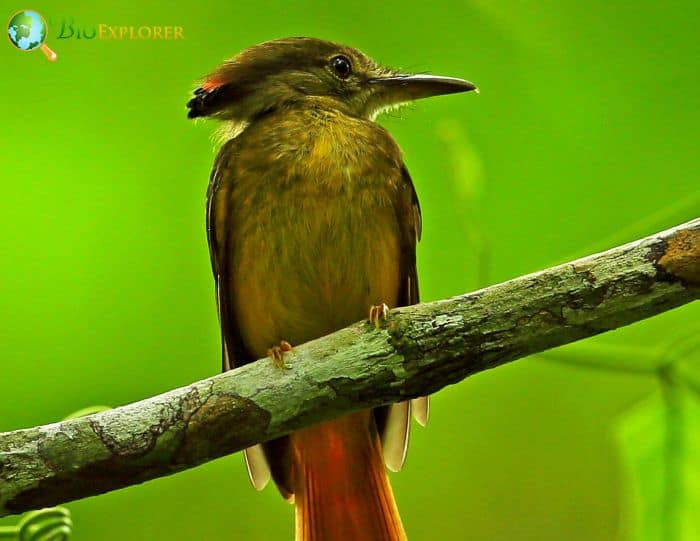
The Royal Flycatcher is a unique bird found in the South American rainforests. Its bright and large crest makes it easy to spot. This amazing display happens during the breeding season.
But there’s more to this bird than its fancy hairdo! It belongs to the tyrant flycatchers family, which lives all over North and South America. The humid lowland evergreen forests are their home.
They also like areas where new trees grow after others have been cut down or died- second-growth forests. The Scientific name for the Royal Flycatcher is Onychorhynchus, which belongs to the Tityridae family of birds.
Potoo Bird
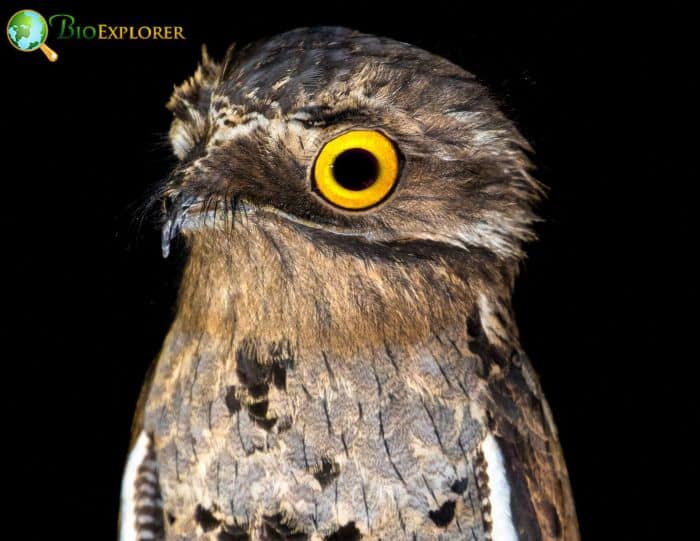
The Potoo Bird lives in South and Central America. These birds love the night and sleep a lot during the day. You will find them in trees in green forests that never lose their leaves.
Potoos eat insects like moths, beetles, crickets and more. One type of potoo bird is the Great Potoo. This one makes its home in forests and rainforests all over Central America. Like other potoos, they come out to hunt for food when it’s dark.
Suggested Reading:
Great Eared Nightjar
Toucan

Toucans live in the rainforests of Central and South America. They stay high up in the rainforest canopy. This is where they eat, sleep, and play. But life for a toucan is not always easy.
Like harpy eagles, other birds can try to catch them for food! Even snakes slither towards them when hungry. Still, toucans help keep their home healthy by spreading seeds through their waste as they fly from tree to tree after eating fruits! So, while they are busy trying to survive each day, these beautiful birds also play a big part in keeping the forest alive!
Suggested Reading:
36 Most Colorful Birds In The World!
Paradise Tanager
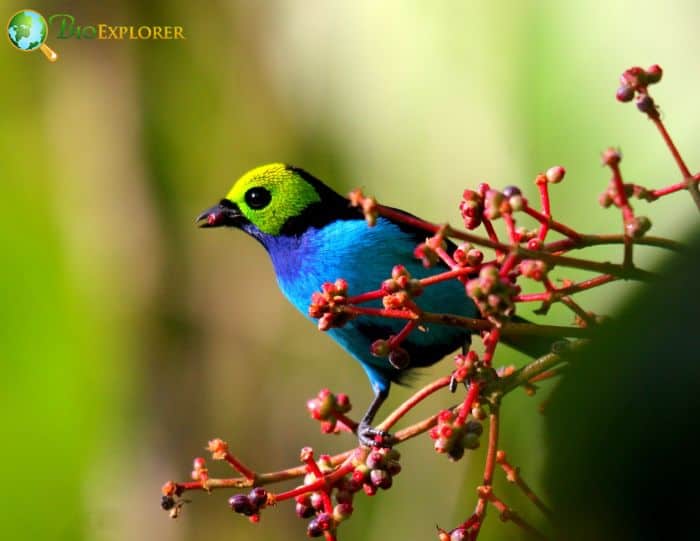
The Paradise Tanager is a bird that lives in the Amazon rainforest. It stands out because of its bright neon colors. The body size of this songbird ranges from 13.5 to 15 cm. Their diet consists mainly of fruit, but they also eat insects.
The back ends of these birds can be yellow and red or all red, depending on the type you come across!
Reptiles & Amphibians in Rainforests
Many reptiles and amphibians call the rainforest their home, showcasing nature’s otherworldly forms and colors. Among the most notorious is the colorful yet dangerous poison dart frog, which gets its name from indigenous tribes using its toxic secretions to poison their blowgun darts.
The awkward-looking side-necked turtle can also be found near rivers or in ponds in the rainforest, thriving due to the abundance of food sources. Residing in deeper waters is a formidable predator – black caiman – noted for its impressive size and fierce hunting tactics.
With the highest note hit by any animal, bicolored tree frogs amplify their songs into night heavens, searching for a mate before laying eggs on leaves overhanging water bodies; when hatched, they drop right into the middle of streams.
Completing this list is the green anaconda- the world’s largest snake- whose sheer strength strangles prey with a death grip before consuming it whole, hiding beneath the water surface untouched by human presence.
Poison Dart Frog
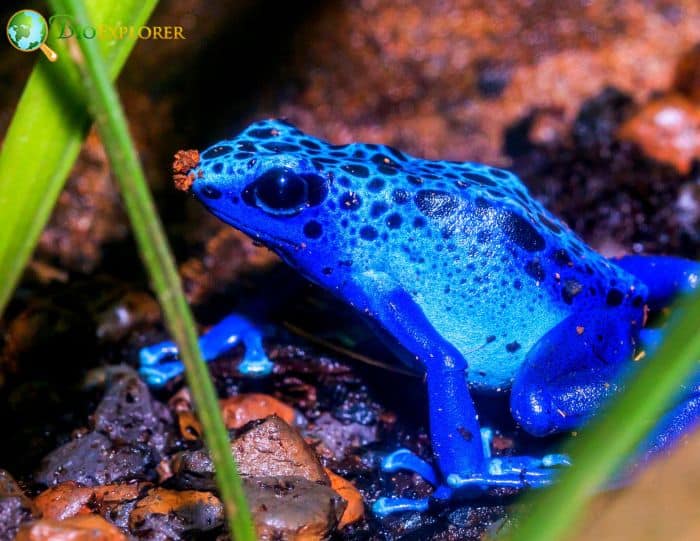
Poison dart frogs live in the tropical rainforests of Central and South America[2]. They stay awake during the day. Their bodies shine bright with color! This show is a scary sign for animals who want to hurt them.
These tough little frogs are smart hunters, too. In fact, they eat tiny insects for food! Lots of poison dart frog family members live in the world-famous Amazon rainforest.
Side-necked Turtle
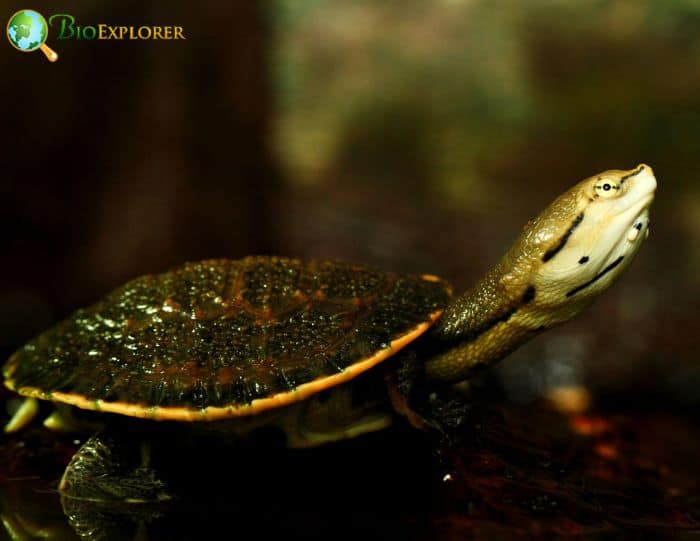
The Side-necked Turtle makes its home in rainforests. It is very special as a reptile due to the neck-bending trait. Unlike other turtles, it moves its neck to the side. This neat trick sets it apart from many others in the reptile world.
This turtle’s head often also shows off yellow spots! Due to their keen adaption skills, they nicely fit into the rainforest ecosystem, where they play an important role. These traits and habits make Side-Necked Turtles a standout among all animals living in rainforests around the globe.
Black Caiman
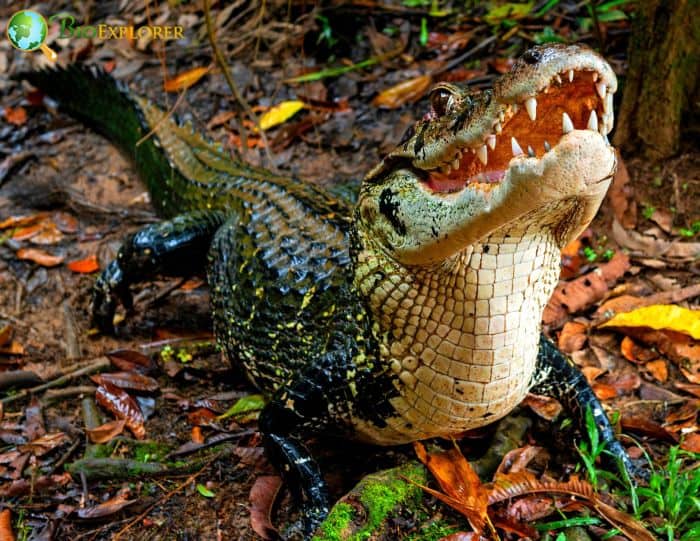
The Black Caiman is from the Amazon rainforest. It’s a big part of the alligator family. It can get to be about 13 feet long. This makes it one of the biggest threats in the Amazon River area.
The Black Caiman eats fish most of the time. But it can also eat bigger things like capybaras and jaguars if it wants to. Being top predators, they help keep everything balanced in their home, the rainforest ecosystem.
Suggested Reading:
Types of Crocodiles
Bicolored Tree Frog
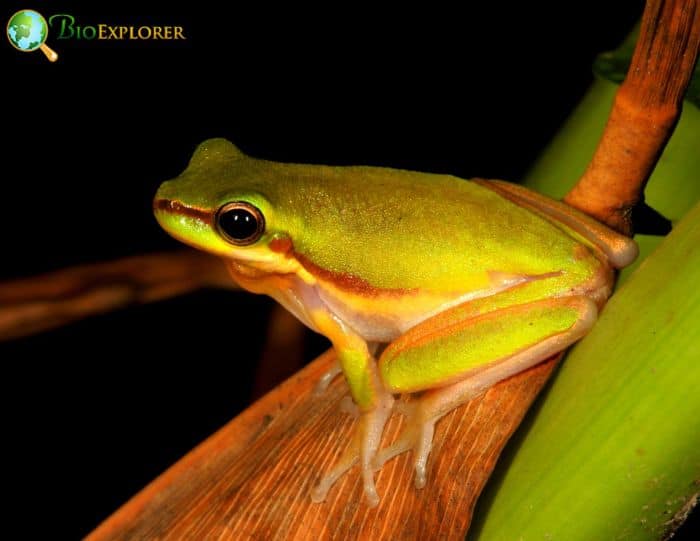
The Bicolored Tree Frog lives in the Amazon Rainforest. Its home is in northern Bolivia. This frog can be found with other reptiles and amphibians that love this rainforest. The cool thing about this frog is its skin.
It has special ways to keep it from getting dry. It does a good job of living here and helps the rainforest stay healthy, too!
Green Anaconda
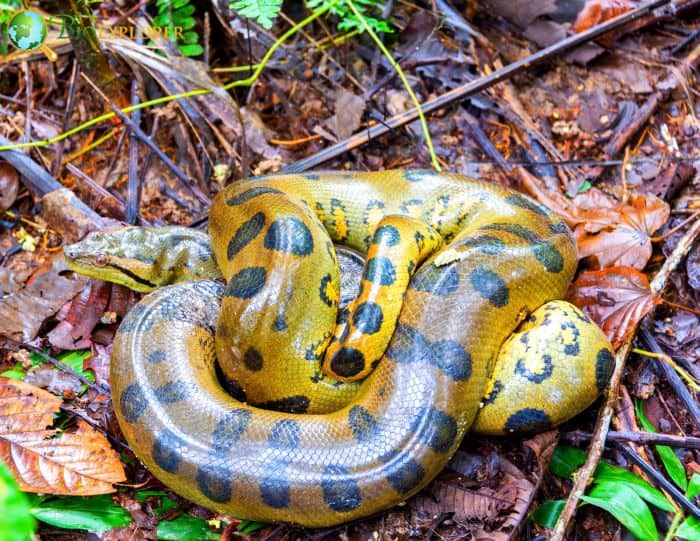
Green anacondas live in the Amazon and Orinoco basins[3]. They favor slow-moving waters. Swamps, marshes, and calm streams are their homes too. As a reptile living in rainforests, they like shallow and wet places.
These snakes are quite big! Green anacondas won the prize for being the largest snake species on Earth. But don’t worry – they’re not venomous. Green anacondas might be big and scary, but their bite won’t poison you!
Insects and Other Invertebrates
Rainforests are rich with diverse species of insects and other invertebrates, including the leafcutter ant, known for its cooperative behavior and complex social organization. Pink-toe tarantulas make their homes among tree branches while serving as predators of pests.
The Blue Morpho Butterfly stands out with its stunning iridescent blue wings that play tricks on potential predators. Urodid Moth cocoons hang from rainforest trees, showcasing unique beauty, while the Brazilian Wandering Spider roams free on the rainforest floor, earning it a spot among the world’s most venomous spiders.
Leafcutter Ant
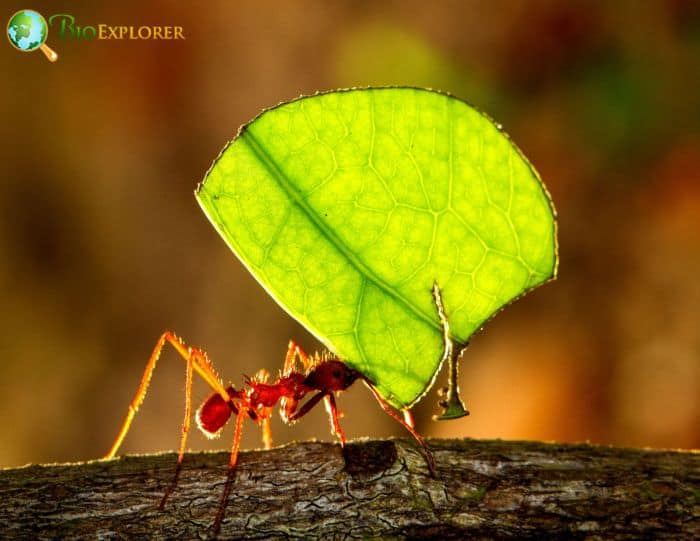
Leafcutter ants are mighty insects that live in the rainforest. These small critters eat more plants than any other animal there! They have a smart way to get food. They cut leaves and carry them back to their home.
Then, they use these bits of leaf to grow their food – what we call cultivation. Many ants live together in one place, making them social insects. Their homes can have millions of ants! They come from a part called the New World tropics and are known as herbivores because they only eat plants.
Not only that, but these tiny beings also have a large role in keeping the rainforest alive and well! So next time you think about the rainforest, think of the hardworking leafcutter ant, too.
Suggested Reading:
Do Insects Have Hearts?
Pink Toe Tarantulas

Pink toe tarantulas are home in South America and the Southern Caribbean[4] trees. This small, tree-dwelling spider eats many bugs, such as locusts and beetles. They have a quiet nature that makes them good to keep as pets.
Despite being carnivores, their main food is crickets and other insects found in rainforests. These spiders live high up on wide-leafed plants away from danger.
Blue Morpho Butterfly
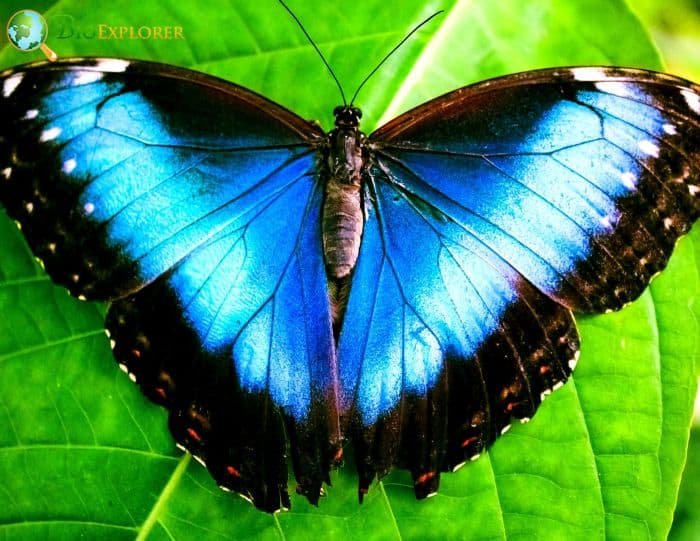
The Blue Morpho Butterfly is bright and big. It has blue wings with a black edge. In rainforests, it’s one of the largest kinds of butterflies! You can find them in warm tropical forests.
They don’t like to fly high up in trees. Most times, they stay close to the ground.
But the cool thing is only male butterflies are blue! Other creatures will see this color as they fly around, looking for food or mates. This type of butterfly also loves insects and other small crawlies in jungles!
Urodid Moth Cocoon
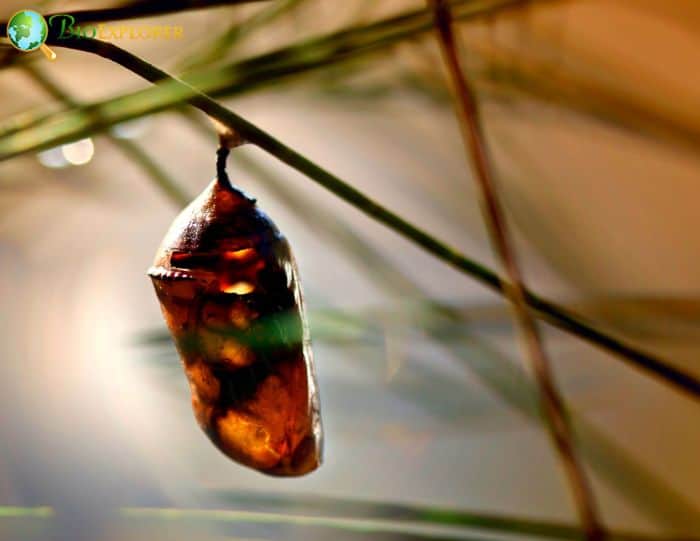
The Urodid Moth makes a very special cocoon. This cocoon does not fully close around the moth’s pupa or baby form. The design of this cocoon is like an open net made from silk. You can find these cocoons in the tops of trees in rainforests.
This insect and its amazing open-net cocoon are part of the many small animals that live in these forests.
Brazilian Wandering Spider
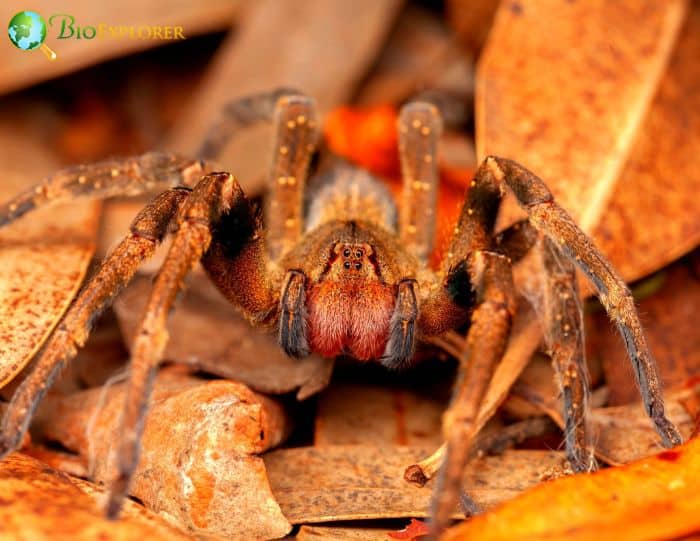
The Brazilian wandering spider calls South American rainforests home. This tarantula is large and known for being quick to fight. It often hides in bananas, earning it the name banana spider.
If you see one, stay clear! Its bite carries strong venom that can hurt and even freeze your muscles. In Greek, its group or ‘genus’ name is Phoneutria, which means “murderess. ” So be careful around this tricky critter!
Conclusion
Rainforests are full of amazing animals. Each one adds to the life and color of the forest. From big cats, monkeys, and frogs to ants, each has a role in keeping rainforests healthy. This mix makes rainforests some of our most precious places on Earth.
Frequently Asked Questions
What kinds of animals live in the rainforest?
Many animals, like monkeys, jaguars, parrots (such as White Cockatoos), pythons, and frogs, live in the rainforest.
Can large animals survive in the rainforest?
Large animals like tigers and jaguars live in the rainforest.
Are there unique species of birds only found in the rainforests?
Many unique bird species, like toucans and macaws, mainly live in rainforests.
Do all snakes from a specific type inhabit the Rainforests?
No, not all snake types necessarily inhabit the Rainforests; it heavily depends on their particular native environments.
Are marine creatures also part of Rainforest life?
While primarily known for its land-dwelling wildlife, several aquatic organisms (such as Pink River Dolphins), including fish and amphibians, reside within Rainforest water bodies.
What is the definition of a rainforest?
A rainforest is a type of forest that gets a lot of rain. It has layers like the floor, understory, and canopy. These parts are full of trees and other plants. This allows many species to live there. Tropical rainforests do not cover much of Earth but still house most of the world’s animals on land.
Many different kinds of plants and animals live harmoniously in these forests. The unique amount of rainfall makes this area dense with green life. The thick canopy above also gives shelter to those who call it home, allowing them to succeed in this ecosystem crafted from nature’s own hands!
The large variety found here points out how important these zones are to preserving global biodiversity, showing why they are valuable among our planet’s natural resources.
What is the most common rainforest animal?
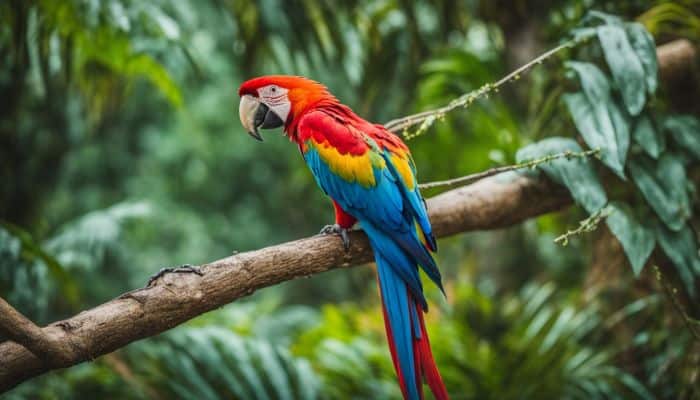
In the vast rainforest biodiversity, common animals vary from one place to another. In some areas, jaguars roam the land while toucans and parrots fill the sky.
Gorillas play in thick jungles, and tarantulas dwell in hidden corners. Rainforests are full of life. Yet, if we look closely, we can’t pick just one animal as the most common.
Some say it could be toucans or gorillas, but that changes with specific habitats. So, no single critter rules all of them! Every rainforest habitat is unique and houses its own mix of special wildlife.
Where do people live in the rainforest?
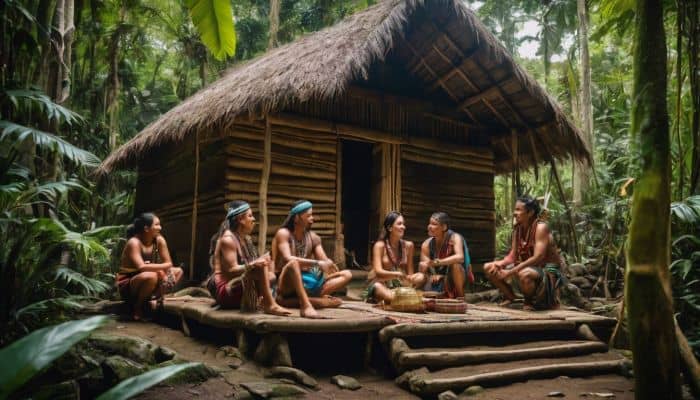
People make their homes in the rainforest. Many of these are native tribes. They live deep within the forests, far from cities and towns. Places like Brazil, New Guinea, and Central Africa have some.
These indigenous peoples stay in remote regions. Their way of life is traditional. The rainforest meets all their needs for food, shelter, and clothing. It’s not an easy life, though — they face many daily challenges. Amazon Rainforest is a popular one with people living there too! Aside from native tribes, others choose to live away from city noise.
These forest dwellers love being around so much green space and enjoy biodiversity hotspots like the Amazon.
What do rainforest animals have in common?
Rainforest animals share some special traits. They live in a place with thick trees and plants, hot weather, and heavy rain. This place is called the ecosystem, where they all live together. Some animals, like frogs and insects, have bright colors, while some blend into this forest home.
Animals such as jaguars, gorillas, or tarantulas hide by changing their skin to resemble tree bark covered with green moss. These animals also play a big part in keeping the ecosystem balanced because they help each other survive.
For example, birds like toucans or parrots spread seeds around when they eat fruit from trees, which helps the plant life grow more freely over time. If one type of animal decreases or goes away completely, it could disrupt everything for all other creatures living there, too!
This shows how important conservation efforts are to protect endangered species inside rainforests to keep ecological balance safe.
How many animals are in rainforests?
Rainforests are full of life. They house more than half of the Earth’s plant and animal species. You could find over 42,000 kinds of insects[5] in one tiny part of a rainforest! This is called biodiversity.
From small bugs to big cats like jaguars, diversity thrives here. Frogs, salamanders, and caecilians make their home by the water in this rich ecosystem. In the trees live snakes and lizards, while Bengal tigers prowl on land below them. Mountain gorillas swing from vines above while orangutans sit watching nearby.
This vast range of wildlife makes every chunk of rainforest special for conservation efforts to save endangered species. Each slice holds an ecological balance vital to keeping these species alive.


